76 Van Dyke Street, One of Red Hook’s Most Important Buildings
Suzanne Spellen, aka Montrose Morris, takes a look at this lone survivor of the fire clay brick industry, part of Red Hook’s first wave of industrial development.

Photo: Kate Leonova for PropertyShark
By Suzanne Spellen (aka Montrose Morris)
Officially, 76 Van Dyke Street is the Brooklyn Clay Retort and Fire Brick Works Storehouse. That’s quite a mouthful for this sprawling one-story building, beautifully constructed in rough-cut stone.
Located near a slip on the Erie Basin, the storehouse is a lone survivor of the fire clay brick industry, once one of the most important technical and structural elements in middle to late 19th century industrial development.
Today, the landmarked structure still functions as headquarters to industrial and architectural development. Only this time, the medium is not fired clay, but fired sand, in the form of glass.
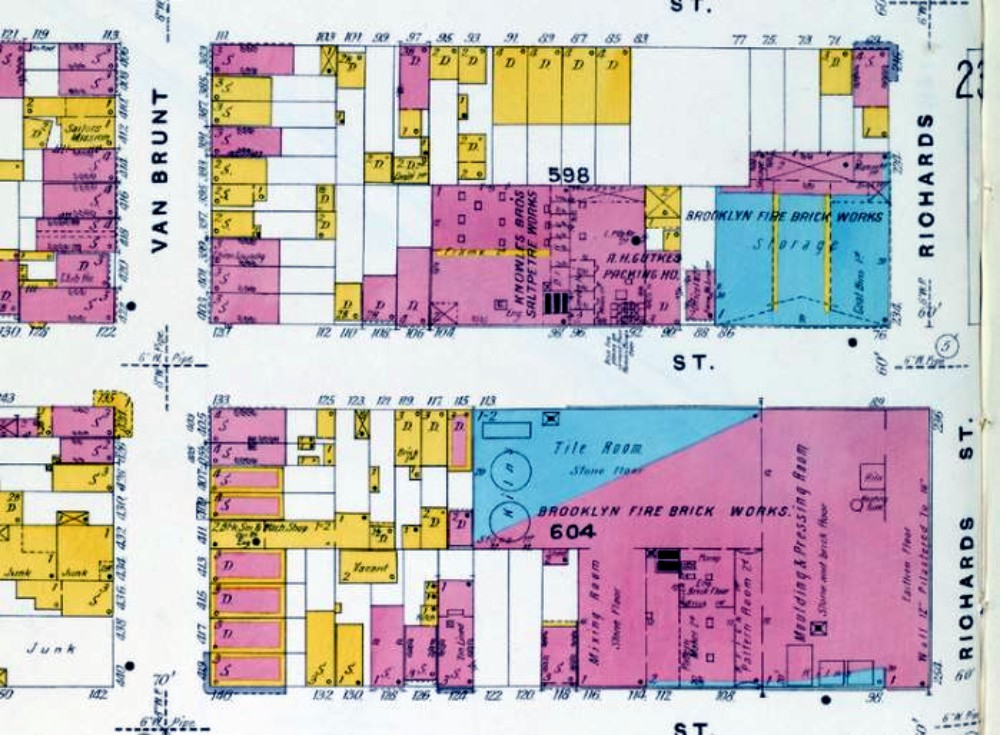
Industry Comes to Red Hook
You probably know that Red Hook was a Brooklyn shipping center, its wharves and piers bursting with warehouses full of everything from grain and cotton to flammables such as turpentine and benzene. But organic commodities were not the only goods that needed to be stored and shipped from Red Hook.
The prime location along New York Harbor also attracted heavy industry, which needed convenient locations near the piers in order to receive raw materials and ship out finished products.
In 1848, Colonel Daniel Richards petitioned the City of Brooklyn to open up 35 streets in Red Hook around the Atlantic Basin. The area was still in the midst of being landfilled and developed by William Beard and his partner Jeremiah P. Robinson. Beard and Robinson would go on to later build their iconic storehouses in the 1870s.
Some of the newly opened streets became home to the area’s first industrial and storage businesses. The Brooklyn Clay Retort and Fire Brick Company was one of them. Other local businesses from those post-Civil War years included a steam pump manufacturer, several oil yards and a felt manufacturer.
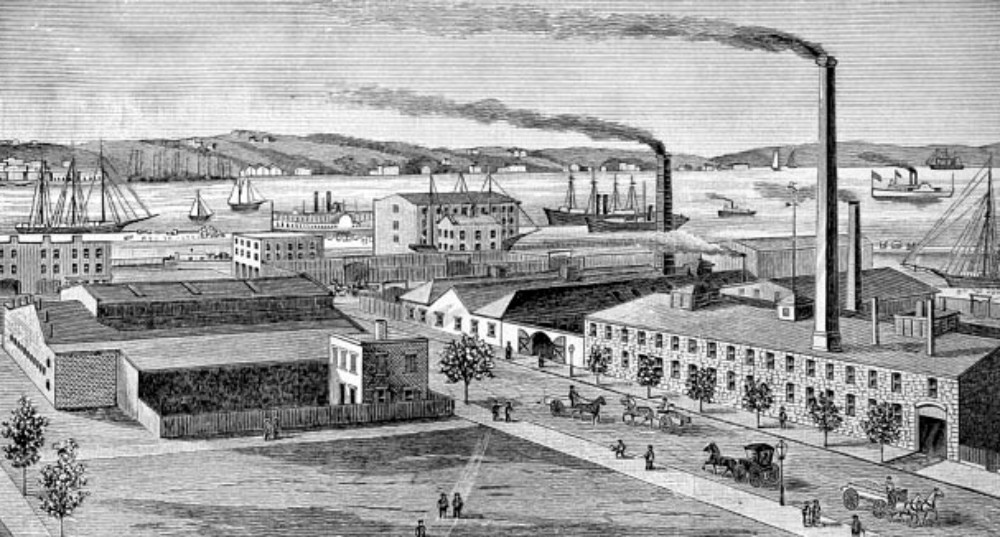
Mr. Brick’s Brick Factory
The Brooklyn Clay Retort and Fire Brick Company was founded in 1854 by Joseph K. Brick, a fortuitous name for a brick manufacturer. (The original name of his company was J.K. Brick & Company, a far less descriptive name.)
Mr. Brick learned his trade in Philadelphia, studying engineering at the Franklin Institute. He moved to New York City in 1848 after being chosen as superintendent of the new Brooklyn Gas Light Company plant along the East River.
He formed his own company in order to supply the materials needed for his work with Brooklyn Gas Light. He also designed the first gas works in Buffalo, and was the engineer and designer of the city water system for Savannah, Georgia.
Brick knew his bricks. He owned large fire clay deposits near Sayreville, NJ. The raw clay was barged up the Raritan River and then directly to his works here in Red Hook. His company was the first to manufacture fire-clay retorts in the United States, and was a major supplier of fire brick.
Fire brick, also known as refractory brick, is made of a naturally forming clay with a high aluminum oxide and silica content. Other substances, like ground quartz and crushed fired brick, are added for strength. The clay, pressed into various sized bricks, is fired until the silica melts, creating a glassy surface.
It can then be reheated to great temperatures, making it perfect for iron and steel manufacturing, kilns, stove and furnace manufacturing, and the production of manufactured gas, the staple of late 19th century industrial and home power. It is still used today for many of the same purposes.
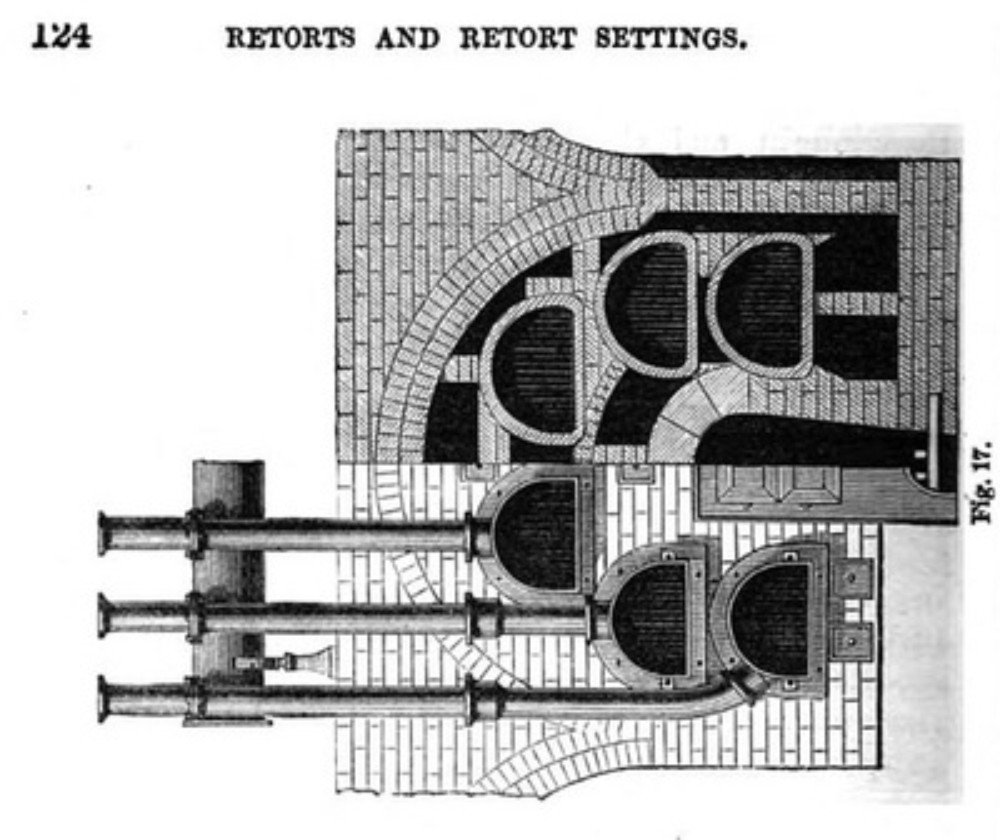
Clay Retorts
Clay retorts were long tube-like vessels with two-inch thick walls. They measured anywhere from eight to 21 feet long, and were used primarily in the production of gas. This was not the same natural gas we used today, but a manufactured gas made from coal.
Coal would be loaded into the retort and superheated for hours, carbonizing it, thereby producing gas along with its by-product, coke. In many ways, these retorts looked like the fuel rods of nuclear reactors, and functioned in similar ways. The gas was then stored for later use in large airtight gasholders.
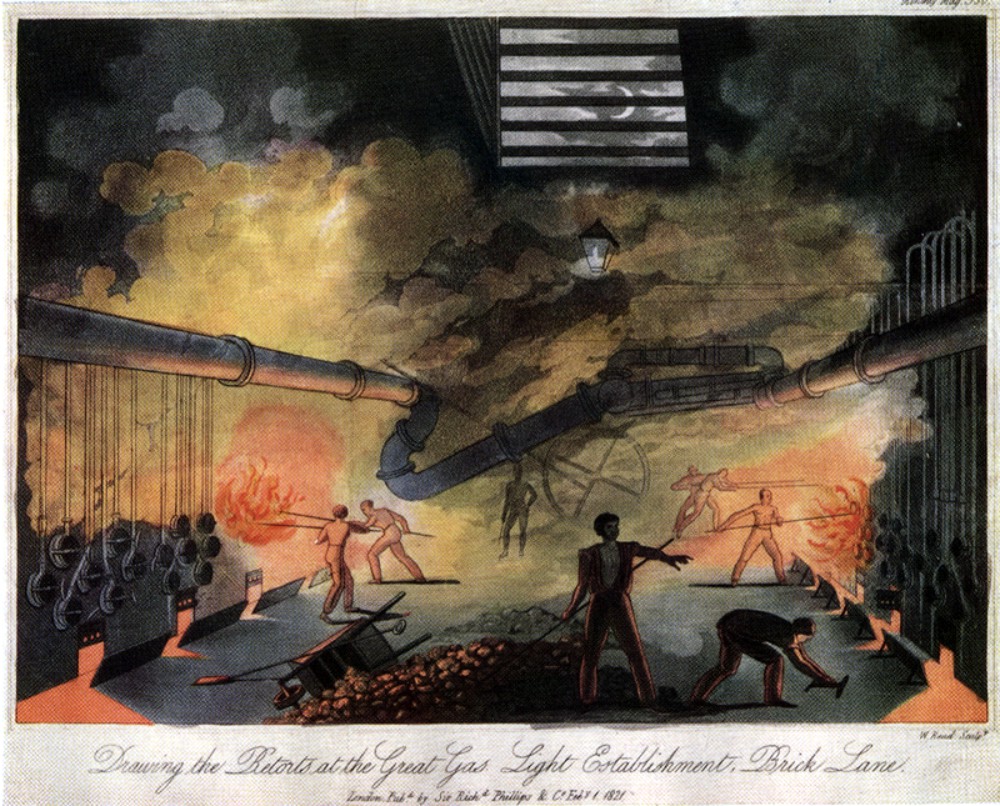
The fire-clay retorts were far superior to cast-iron designs, holding the heat better and longer. The use of clay retorts greatly aided in the technological advances of gas-powered machinery in industry, and the use of gas for illumination. The Brooklyn Clay Retort and Fire Brick Company was one of only 12 such companies in the country, three of which were located in the New York City area.
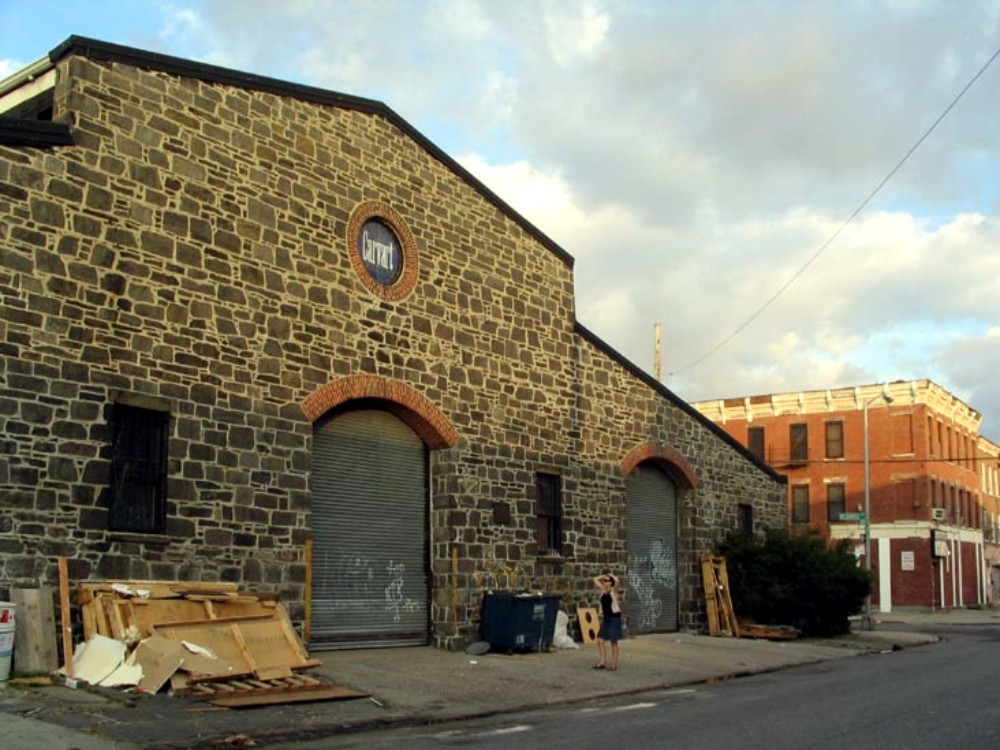
The Building at 76 Van Dyke Street
The first factory building for the company was built in 1855. It was a two-story building with three large kiln chimneys rising from the rear. It was located on Van Dyke Street, directly across the street from the current building. By 1860, the company had expanded into a complex that included several factory buildings, an office building, stables, coal storage buildings and this storage warehouse.
Joseph Brick probably designed the entire complex: he had the background and knowledge to do so. He built part of the factory, as well as the entire storehouse, out of schist, a local stone that makes up the bedrock of New York. The storehouse is a particularly handsome and elegant building, something that was not only practical and strong, but also attractive from an advertising standpoint.
The design of the building was typical for industrial buildings of the day. Red Hook and Gowanus used to have many such structures, and fortunately some still remain, but they are all made of brick.
This is the only one in stone, and remains largely intact. The building was landmarked in 2001. Efforts to designate the remaining original factory building across the street— some of which is also made of the same rough-cut stone — were not successful.
The storehouse is a basilica-like structure with clerestory windows in the monitor, the roof extension situated above the main roof to maximize natural light. The bulls-eye windows in the end walls also aim light into the interior, an open space supported by beams and cast iron columns.
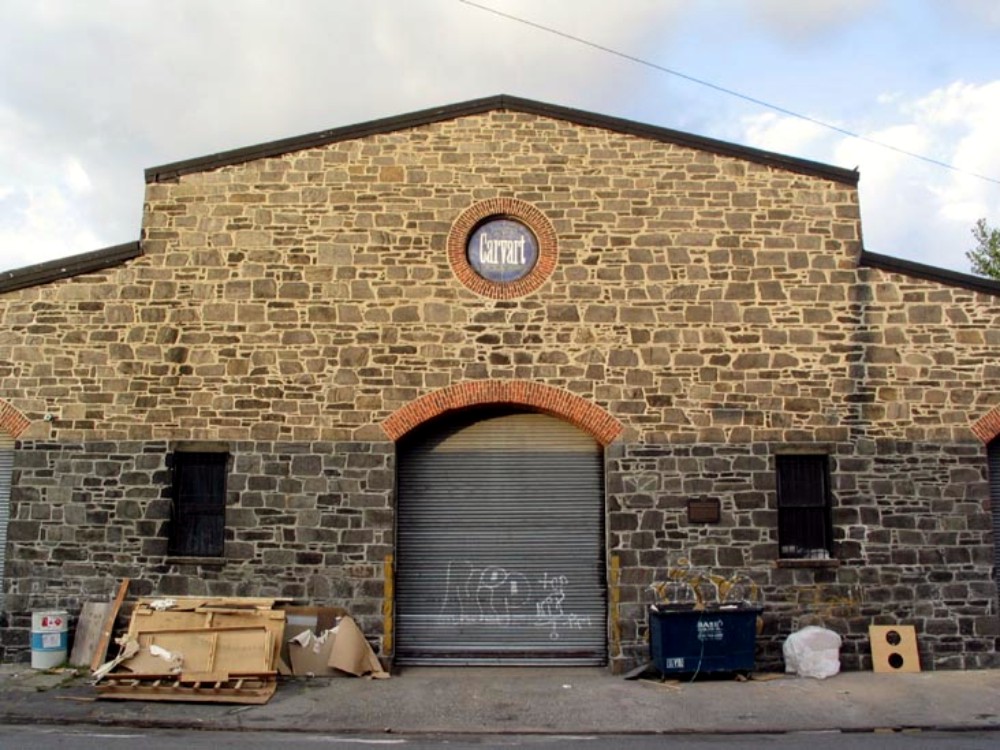
The Further History of 76 Van Dyke Street
The company continued past Joseph Brick’s death in 1867. It was operated as a partnership between Julia Brick, his widow, and Edward White, a director of the Nassau Gas Light Company. The name gradually changed to the Brooklyn Fire Brick Works. It was incorporated in 1893, and continued in business until the early 1930s.
When they closed up shop, the complex was sold to the American Molasses Company. In 1948, they altered the building for the storage of sugar, pouring a concrete floor and blocking the windows. They also made changes to the factory buildings across the street, including tearing down some of the original buildings and replacing them.
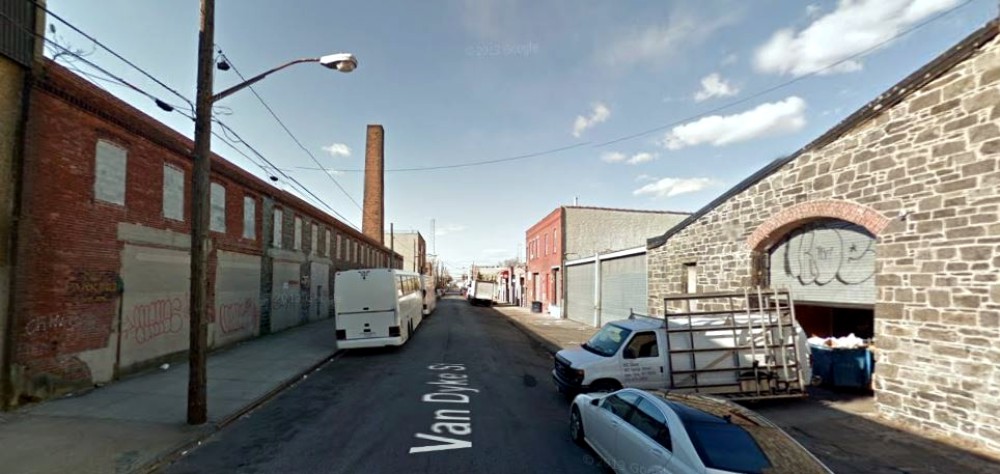
In 1965, the storehouse belonged to the Sucrest Corporation, a sugar refining operation. It then passed to the Revere Sugar Corporation. The building was vacant between 1985 and 1991, eventually becoming part of the O’Connell Organization’s holdings.
In 1995, restoration was begun in the building. All of the windows in the upper monitor, as well as the walls and the bulls-eye windows, were restored. The back wall, which had collapsed, was replaced by a brick wall, and the exterior stone was repointed. Other non-historic work was also done, transforming the building into a modern, 21st century structure.
For the past decade, the large building has been home to the Carvart Glass Company who make architectural glass. Their products can be found in high-end residential and commercial properties across the city and the world, including Manhattan’s Gansevoort Hotel, Christian Dior Homme, and a glass floor in the Brooklyn Museum.
The company lives up to the spirit of the original Brooklyn Fire Clay works – transforming the simple materials of the earth by fire and heat into items of great usefulness and beauty.






Comments